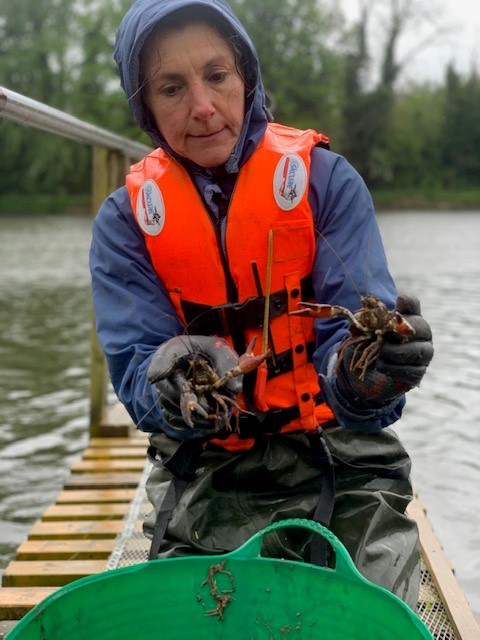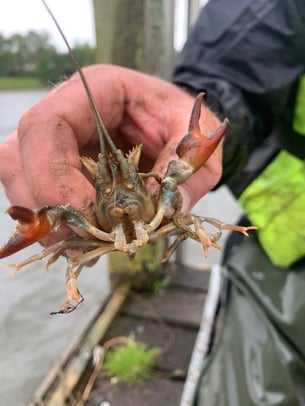
As part of Invasive Species Week, we’re sharing the strange ways your tap water overlaps with nature.
Come rain or shine, foot or boat, the conservation team at Bristol Zoo can be found casting a close eye over a lobster-like invader at Chew Magna.
Jen Nightingale’s conversation team have been doing this for the last 3 years, visiting our reservoir every single fortnight. The team hand check the 80 odd carefully designed traps.
The invader they’re watching over is the Signal Crayfish.
Signal Crayfish are an all-around nightmare for the environment. Introduced to the UK as a posh delicacy from America, they escaped from plates in the 70s and have been causing havoc in nature since.
They quickly adapted, eating everything their little beady eyes could see. Like a true escaped invader, they soon took over, dramatically reducing populations of the UK’s only native crayfish. The White Clawed Crayfish are now at threat of extinction.
More than this, these invading Signal Crayfish also damage riverbeds, causing habitat damage. It also changing the way the river functions.
Shortly, the nature of the study will be changing with the introduction of a natural predicator: perch, to help try and control them.
As part of the week, Bristol Water is supporting the Check Clean Dry biosecurity method, a simple checklist for anyone who enters the regions waterways:
- CHECK your equipment and clothing for live organisms—particularly in areas that are damp or hard to inspect
- CLEAN and wash all equipment, footwear and clothes thoroughly. Use hot water when possible. If you do come across any organisms, leave them at the water body where you found them
- DRY all equipment and clothing—some species can live for many days in moist conditions. Make sure you don’t transfer water elsewhere
With thanks to Jen Nighting
ale’s team at Bristol Zoo, for letting us spend the morning with them to make this story!
st content here…


-1.png?width=500&height=500&name=Untitled%20design%20(36)-1.png)
-1.png?width=500&height=500&name=Untitled%20design%20(96)-1.png)


